Abstract
Temporary infrarenal clamping of the aorta during reconstructive surgery induces incomplete ischemia of the leg muscle. After release of the clamp, severe muscle metabolic derangement with loss of high-energy phosphate compounds has been observed, indicating a dysfunction or damage of the muscle cells. In six patients operated on for occlusive aortoiliac disease, low-molecular-weight dextran (LMWD) was peroperatively administered for optimal volume loading and prevention of clotting. No heparin was used. Before, during and after the clamping period the central hemodynamics were monitored, and glycogen, glucose, lactate, pyruvate, phosphocreatine (PCr), creatine (Cr), ATP, ADP and AMP content in the thigh muscle were analyzed using enzymatic fluorometric techniques. Even though ischemia developed during the occlusion, no decline in the adenylate (ATP + ADP + AMP) or creatine (PCr + Cr) pools occurred after the clamp was released, and the energy charge of the adenine nucleotides remained unchanged. It is suggested that LMDX prevents rheologic changes impairing the microcirculation during and after the ischemic period, and thereby improves oxygenation of the muscle tissue upon reperfusion.
Full text
PDF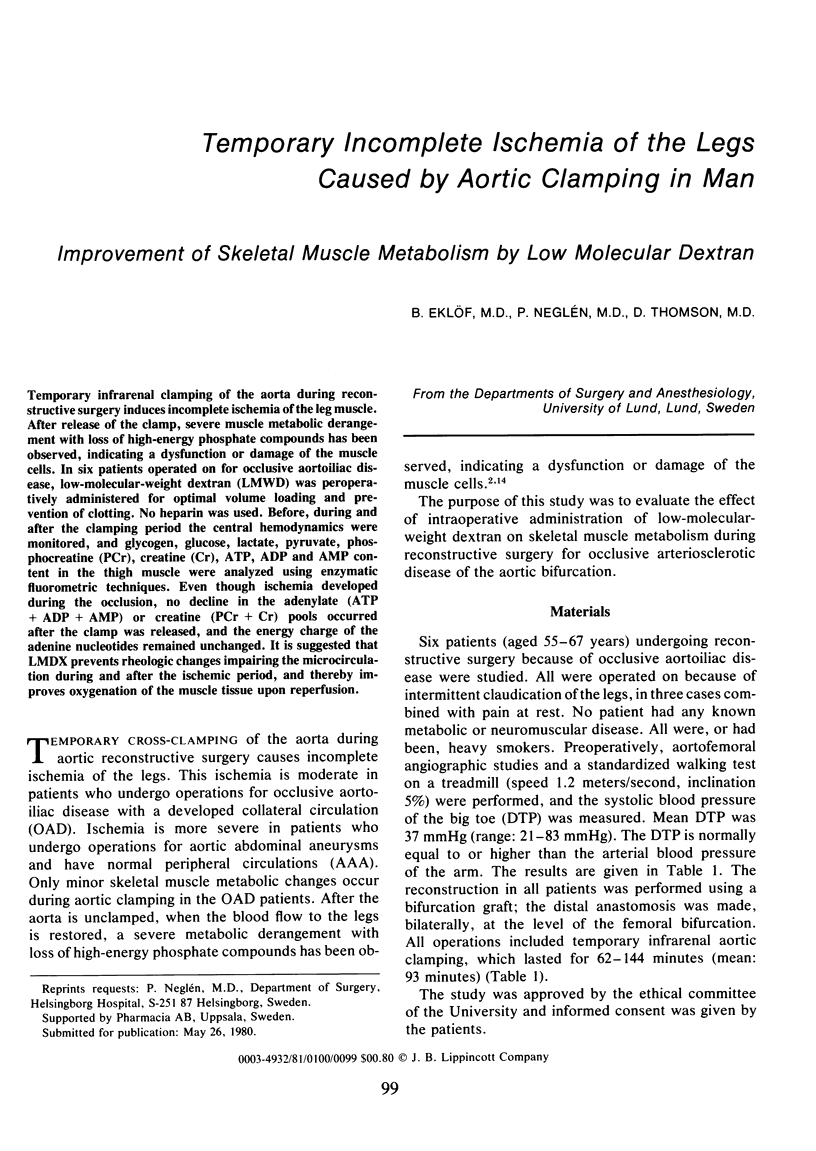

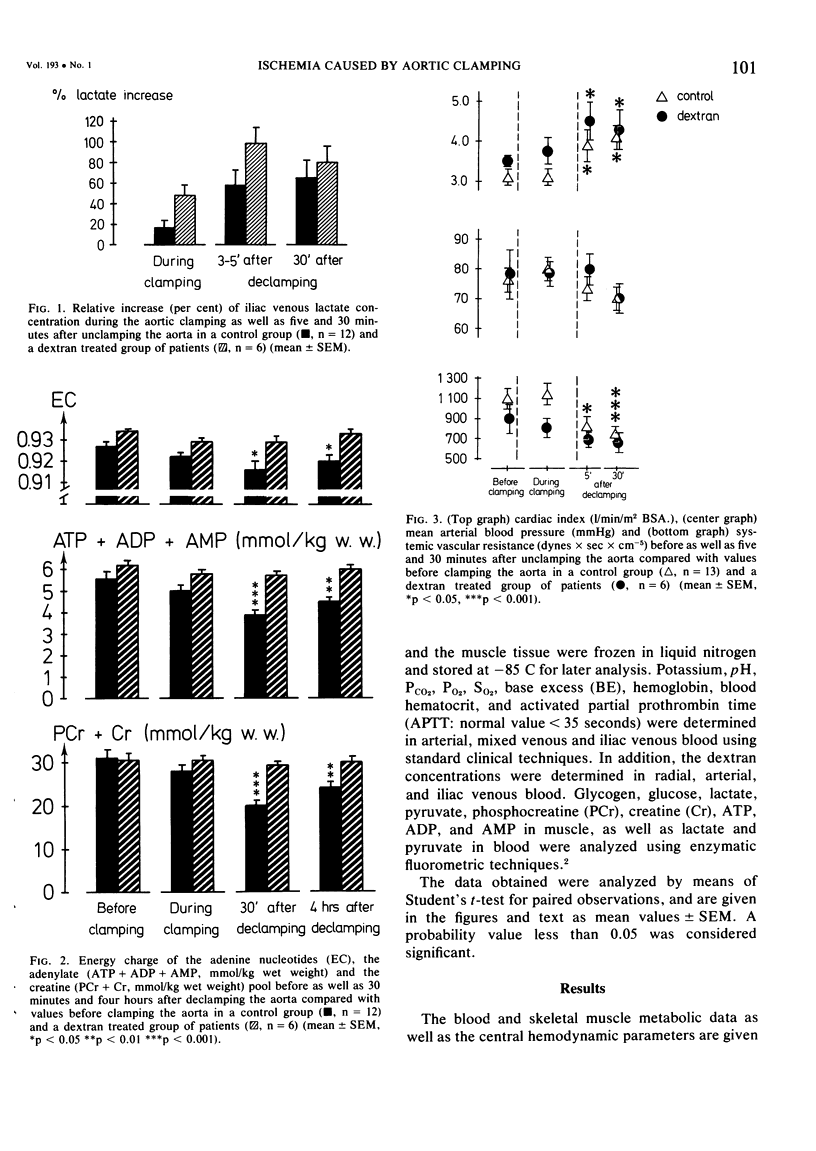
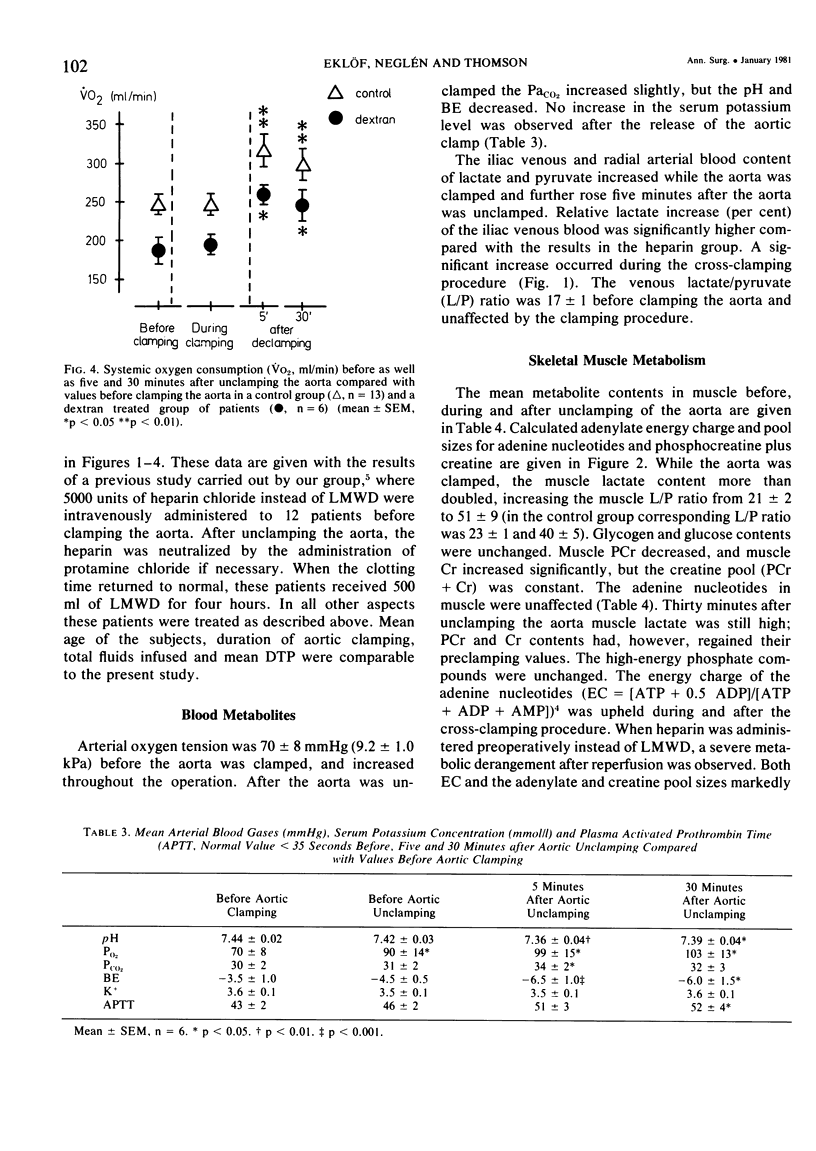
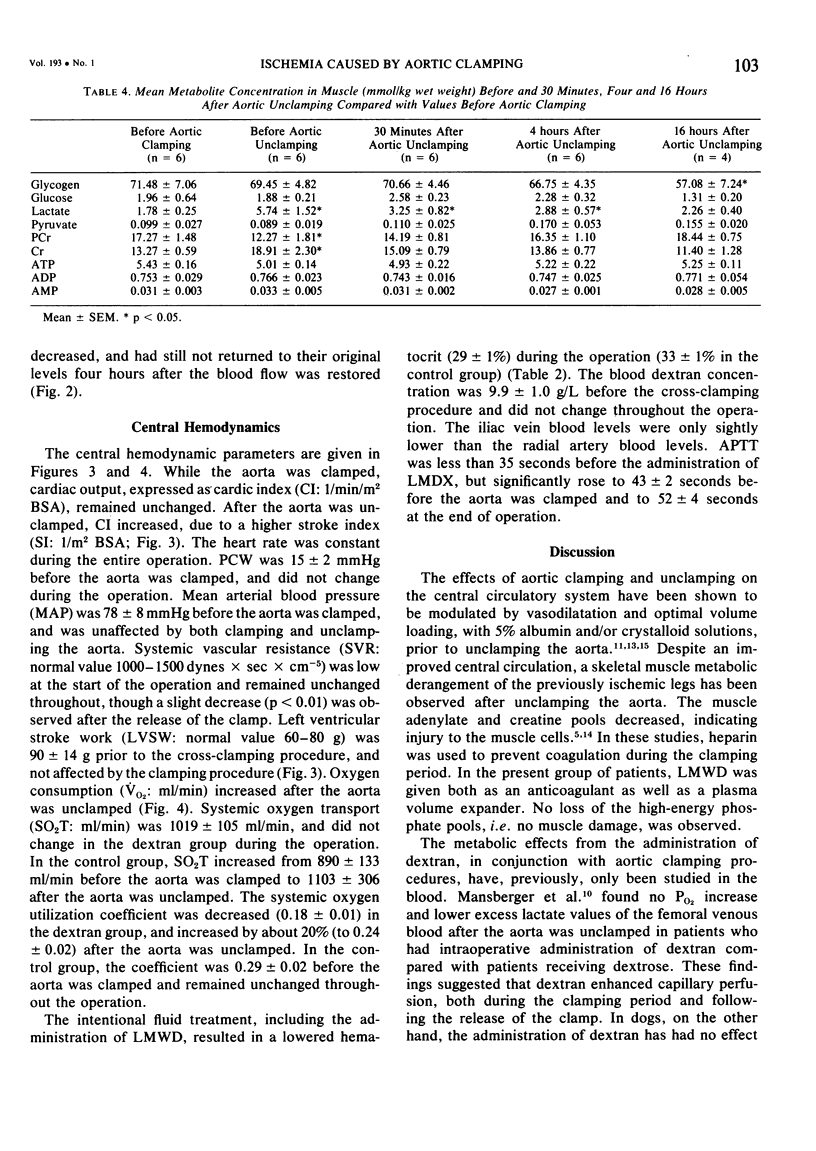
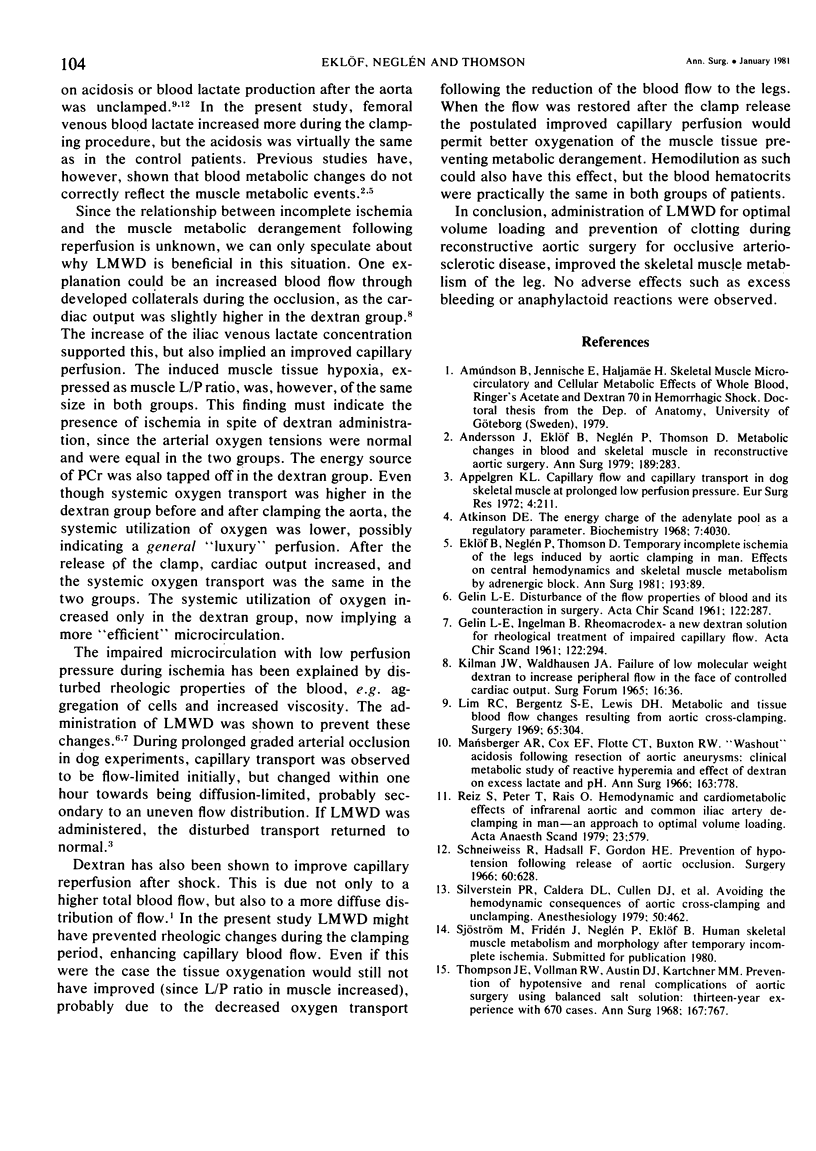
Selected References
These references are in PubMed. This may not be the complete list of references from this article.
- Andersson J., Eklöf B., Neglén P., Thomson D. Metabolic changes in blood and skeletal muscle in reconstructive aortic surgery. Ann Surg. 1979 Mar;189(3):283–289. doi: 10.1097/00000658-197903000-00004. [DOI] [PMC free article] [PubMed] [Google Scholar]
- Appelgren K. L. Capillary transport in relation to perfusion pressure and capillary flow in hyperemic dog skeletal muscle in shock. Eur Surg Res. 1972;4(3):211–220. doi: 10.1159/000127616. [DOI] [PubMed] [Google Scholar]
- Atkinson D. E. The energy charge of the adenylate pool as a regulatory parameter. Interaction with feedback modifiers. Biochemistry. 1968 Nov;7(11):4030–4034. doi: 10.1021/bi00851a033. [DOI] [PubMed] [Google Scholar]
- GELIN L. E. Disturbance of the flow properties of blood and its counteraction in surgery. Acta Chir Scand. 1961 Nov;122:287–293. [PubMed] [Google Scholar]
- GELIN L. E., INGELMAN B. Rheomacrodex--a new dextran solution for rheological treatment of impaired capillary flow. Acta Chir Scand. 1961 Nov;122:294–302. [PubMed] [Google Scholar]
- Kilman J. W., Waldhausen J. A. Failure of low molecular weight dextran to increase peripheral flow in the face of controlled cardiac output. Surg Forum. 1965;16:36–37. [PubMed] [Google Scholar]
- Lim R. C., Jr, Bergentz S. E., Lewis D. H. Metabolic and tissue blood flow changes resulting from aortic cross-clamping. Surgery. 1969 Feb;65(2):304–310. [PubMed] [Google Scholar]
- Mansberger A. R., Jr, Cox E. F., Flotte C. T., Buxton R. W. "Washout" acidosis following resection of aortic aneurysms: clinical metabolic study of reactive hyperemia and effect of dextran on excess lactate and pH. Ann Surg. 1966 May;163(5):778–787. doi: 10.1097/00000658-196605000-00015. [DOI] [PMC free article] [PubMed] [Google Scholar]
- Reiz S., Peter T., Rais O. Hemodynamic and cardiometabolic effects of infrarenal aortic and common iliac artery declamping in man--an approach to optimal volume loading. Acta Anaesthesiol Scand. 1979 Dec;23(6):579–586. doi: 10.1111/j.1399-6576.1979.tb01490.x. [DOI] [PubMed] [Google Scholar]
- Schneiweiss R., Hadsall F., Gordon H. E. Prevention of hypotension following release of aortic occlusion. Surgery. 1966 Sep;60(3):628–632. [PubMed] [Google Scholar]
- Silverstein P. R., Caldera D. L., Cullen D. J., Davison J. K., Darling R. C., Emerson C. W. Avoiding the hemodynamic consequences of aortic cross-clamping and unclamping. Anesthesiology. 1979 May;50(5):462–466. doi: 10.1097/00000542-197905000-00016. [DOI] [PubMed] [Google Scholar]
- Thompson J. E., Vollman R. W., Austin D. J., Kartchner M. M. Prevention of hypotensive and renal complications of aortic surgery using balanced salt solution: thirteen-year experience with 670 cases. Ann Surg. 1968 May;167(5):767–778. doi: 10.1097/00000658-196805000-00015. [DOI] [PMC free article] [PubMed] [Google Scholar]


